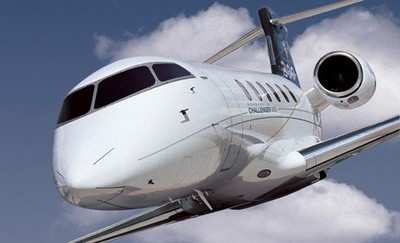Aircraft Diverts to BDL
On Friday, 03 March 2023, a Bombardier Challenger 300 large-cabin business jet traveling from Keene, New Hampshire’s Dillant–Hopkins Airport (EEN) to Virginia’s Leesburg Executive Airport (JYO) diverted enroute to Connecticut’s Bradley International Airport (BDL) after an encounter with severe, possibly extreme turbulence claimed the life of one of the aircraft’s three passengers.

Fatalities resulting from turbulence are exceedingly rare, and both the NTSB and FBI have opened investigations into the occurrence.
NTSB spokeswoman Sarah Sulick set forth in a statement: "The plane was enroute from Keene, New Hampshire, to Leesburg, Virginia, with five people on board—three passengers and two crew. … NTSB investigators have removed the cockpit voice recorder and flight data recorder and are continuing to gather information from the flight crew, operator, and [surviving] passengers about the circumstances of the event."
The extent of damage to the aircraft—which is currently secured at BDL and, according to FAA records, owned by Kansas City telecommunications company Conexon—is unknown, as is the exact cause of the single fatality.
A preliminary report is expected in two to three weeks.
In aerodynamics, turbulence is air movement characterized by chaotic changes in pressure and flow velocity. Turbulence is diametrical to laminar flow, which any licensed pilot knows is the flow of air in parallel layers, with no disruption between subject layers.
Turbulence—insomuch as it is a dissipative state—has long resisted detailed physical analysis, and the interactions within turbulence create extraordinarily complex phenomena. The renowned American physicist Richard Feynman described turbulence as the most important unsolved problem in classical physics.
Atmospheric turbulence is generally associated with meteorological phenomena such as fronts, wind shear, inversions, and thunderstorms; and vertical displacement of air via mechanical processes such as orographic lifting and mountain waves, and radiative processes such as thermal lifting.
The FAA Pilot Controller Glossary directs pilots to report turbulence encountered in flight as light, moderate, severe or extreme. Differentiation between the four types is predicated upon the nature of the initiating phenomenon and the stability of the ambient air.
Light turbulence engenders momentarily slight changes in aircraft altitude and/or attitude or modest bumpiness. Aircraft occupants may feel slight strain against their seat-belts.
Moderate turbulence is more intense than light turbulence, but instantiates no loss of aircraft control. Aircraft occupants will feel definite strain against their seat-belts and unsecured objects will be displaced.
Severe turbulence occasions large and abrupt changes in aircraft altitude and/or attitude and, usually, significant variations in indicated airspeed. Pilots may momentarily lose control of aircraft in severe turbulence, and aircraft occupants will be forced violently against their seat belts.
Extreme turbulence tosses airplanes violently about and renders aircraft control impossible. Aircraft encountering extreme turbulence may suffer structural damage.
Chop is a type of minor turbulence characterized by rapid, somewhat rhythmic bumpiness.

The most insidious and arguably dangerous manifestation of turbulence is Clear Air Turbulence (CAT). Such turbulence is associated with neither cumuliform clouds nor thunderstorms, and generally occurs at or above 15,000-feet AGL. Clear air turbulence is not restricted to cloud-free air—though 75-percent of CAT encounters do, in fact, occur in clear air.
CAT can extend to extremely high altitudes (above FL600) and is often associated with wind-flow patterns that produce shears, such as sharp upper-level troughs; closed lows aloft, particularly if the low’s flow is merging or splitting; and in the vicinity of cutoff lows.
Speaking to the subject of the 03 March Challenger 300 incident, former NTSB chair and executive director of Embry-Riddle’s Center for Aviation and Aerospace Safety Robert Sumwalt remarked: “I can't remember the last fatality due to turbulence.”
 Bolen Gives Congress a Rare Thumbs-Up
Bolen Gives Congress a Rare Thumbs-Up The SportPlane Resource Guide RETURNS!!!!
The SportPlane Resource Guide RETURNS!!!! Buying Sprees Continue: Textron eAviation Takes On Amazilia Aerospace
Buying Sprees Continue: Textron eAviation Takes On Amazilia Aerospace Hawker 4000 Bizjets Gain Nav System, Data Link STC
Hawker 4000 Bizjets Gain Nav System, Data Link STC Echodyne Gets BVLOS Waiver for AiRanger Aircraft
Echodyne Gets BVLOS Waiver for AiRanger Aircraft




